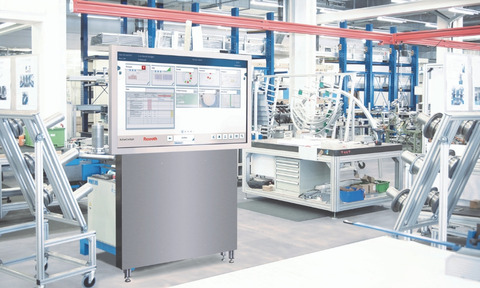Why sensors will be in the vanguard of your 4.0 evolution
20 Mar 2019

Sensors are the right starting point for any facility looking to evolve for smart manufacturing and a connected supply chain, advises Paul Streatfield of Bosch Rexroth...
Sensors are on the front line of the fourth industrial revolution. They facilitate collection of data and process monitoring that can empower clear planning decisions, build comprehensive cost justifications, validate connectivity predictions and manage many of the risks associated with change.
Fitted onto a cell, machine or tooling, sensors are connected to software which, once correctly installed, can measure variables such as temperature, pressure, vibration and power consumption.
The collection and interpretation of data enables better understanding of the complex dynamics at play within the business before moving towards more advanced digital enhancements. For businesses experiencing connectivity for the first time, sensors provide a controlled and manageable first taste of a connected environment and an inside view into the machinery they rely on day-to-day.
Monitoring a number of process areas in the early stages of any digitisation strategy can help identify the most substantial areas of potential ROI..
Once process data gathering is in place, businesses can choose to enhance the capabilities of their sensors through the integration of higher-level systems which will facilitate the collation and display of data in real-time. This can lift your connectivity implementation from a simple ‘plug and play’ function to something which is more integral to the business’s overall infrastructure and processes.
Select the right sensor specialist
There is a misconception that for many manufacturing environments, data collection would be rendered impossible by the harshness of the application or the product itself. A number of exceptional sensor technology manufacturers specialise in connectivity systems specifically designed to collect data in dusty, dirty or wet conditions, as well as in the extremes of temperature and throughout ageing machinery stock.
Likewise, transparent, semi-transparent, uneven and highly reflective objects pose no challenge to class-leading digitised sensor systems. The important thing is to identify the manufacturer that you feel understands your market, supply chain, facility and overall digitisation objectives.
Downtime costs at our Homburg facility have been reduced by 25 per cent, with a return on investment achieved in less than 18 months
Once sensors are in place and configured to collect the data variables required by each specific monitored process, enhancing the functionality of the sensors through higher level systems will allow data to be transported and displayed in real time to a central location.
Tansportation and display is achieved through an open-software architecture, which your chosen expert will be able to implement for you, as well as providing training for your staff and assistance on how to display and interpret real-time data.
Combining multiple data sources into one analytical platform via an Internet of Things (IoT) gateway, or the more commonly recognised IO-Link communications system, this additional functionality is how we, in essence, give the sensors a voice. Without it, the data they collect is essentially trapped at plant level rather than being accessible at a higher, strategic vantage point.
From here, engineers can control and optimise machines and processes, cut down on wiring and cabling, plus begin to execute a highly profitable programme of predictive maintenance in order to prevent expensive emergency plant outages.
Smart sensors respond to all type of control commands and can receive new settings in seconds to enable actions like rapid product changeovers. Adding additional sensors at this stage is also simple, thanks to instant configuration via pre-set parameters downloaded from the central data hub.
Benefits like these, can not only deliver an impressive payback period but can also validate your request for further investment: Downtime costs at our Homburg facility have been reduced by 25 per cent, with a return on investment achieved in less than 18 months.
Paul Streatfield is strategic product manager at Bosch Rexroth

